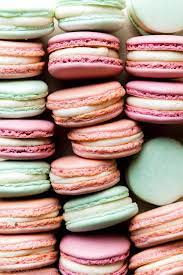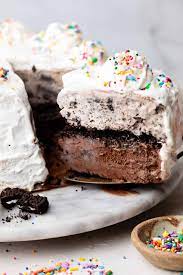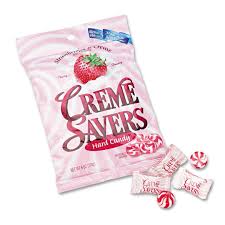The Delightful World of Macarons
Macarons, the dainty French confection that has captured the hearts and taste buds of dessert lovers worldwide. These delicate treats, often confused with macaroons (coconut-based cookies), are a true embodiment of elegance and flavor.
Characterized by their smooth, crisp shells and soft, chewy interiors, macarons come in a rainbow of colors and an endless variety of flavors. From classic options like pistachio, raspberry, and chocolate to more adventurous combinations such as salted caramel, matcha green tea, and lavender honey, there’s a macaron to suit every palate.
What sets macarons apart is the skill required to perfect them. The process of creating these little masterpieces involves precise measurements, careful folding of ingredients, and expert piping techniques. The result? A symphony of textures and tastes that dance on your tongue with each bite.
Whether enjoyed as a luxurious treat for oneself or presented as a sophisticated gift for a loved one, macarons never fail to impress. Their charming appearance makes them ideal for special occasions like weddings, birthdays, or afternoon tea parties.
So next time you find yourself craving something sweet yet refined, consider indulging in the enchanting world of macarons. Let these delightful creations whisk you away on a journey of taste sensations that are sure to leave you craving more.
Macarons vs. Macaroons: Common Questions and Answers
- Do Americans call macarons macaroons?
- Why is a macaron so expensive?
- What is a macaron vs macaroon?
- What is in a Macron?
- Why are macarons so expensive?
- What ingredients are in macaroons?
- Is it pronounced macarons or macaroons?
Do Americans call macarons macaroons?
The distinction between macarons and macaroons often sparks curiosity among dessert enthusiasts. While the terms may sound similar, Americans typically refer to the delicate French sandwich cookies made with almond flour, sugar, and egg whites as “macarons,” reserving the term “macaroons” for the coconut-based confections. This subtle yet significant difference in naming reflects the unique characteristics and flavor profiles of these two beloved treats, highlighting the cultural nuances in culinary terminology.
Why is a macaron so expensive?
The price of macarons often reflects the meticulous craftsmanship and premium ingredients that go into creating these exquisite treats. From the precise measurements and delicate mixing required to achieve the perfect texture to the high-quality almond flour, fine sugar, and flavorful fillings used in each batch, every step of the macaron-making process contributes to its elevated cost. Additionally, the time-consuming nature of crafting macarons, along with the expertise needed to master their intricate techniques, further adds to their perceived value. Ultimately, when indulging in a macaron, one is not just paying for a sweet treat but for a symphony of flavors and textures meticulously orchestrated for a moment of pure culinary delight.
What is a macaron vs macaroon?
When it comes to the frequently asked question of what distinguishes a macaron from a macaroon, the answer lies in their ingredients and characteristics. A macaron is a delicate French pastry made with almond flour, egg whites, and sugar, known for its smooth, colorful shells and soft, chewy interiors. On the other hand, a macaroon is a sweet coconut-based cookie that is typically dense and chewy with a crispy exterior. While both treats share a similar-sounding name and origins in Europe, their differences in texture, ingredients, and appearance set them apart as unique confections catering to different tastes and preferences.
What is in a Macron?
A macaron typically consists of two almond meringue cookies sandwiched together with a flavorful filling. The meringue cookies are made from almond flour, powdered sugar, and egg whites, giving them their signature delicate texture and slightly crunchy exterior. The filling can vary widely, with popular options including ganache, buttercream, jam, or curd. This combination of crisp shells and luscious fillings results in a harmonious blend of sweetness and texture that defines the beloved macaron.
Why are macarons so expensive?
Macarons are often perceived as expensive due to the meticulous craftsmanship and high-quality ingredients that go into making these delicate treats. The process of creating macarons is labor-intensive, requiring precision in measuring and mixing ingredients, as well as skillful piping and baking techniques to achieve the perfect texture and appearance. Additionally, premium ingredients such as almond flour, high-quality chocolate, and natural flavorings contribute to the elevated cost of macarons. The time and expertise required to master the art of macaron-making further justify their price point, making them a luxurious indulgence worth savoring.
What ingredients are in macaroons?
Macarons, the beloved French delicacy, are crafted from a handful of simple yet essential ingredients. The basic components of a macaron include almond flour, powdered sugar, egg whites, and granulated sugar. These ingredients are skillfully combined to create the iconic smooth shells and soft, chewy interiors that define these delectable treats. While the core recipe remains consistent, various flavorings and food colorings can be added to customize macarons to suit different tastes and preferences. The magic of macarons lies in the harmonious blend of these fundamental ingredients, resulting in a confection that delights both the eyes and the palate.
Is it pronounced macarons or macaroons?
The frequently asked question regarding macarons and macaroons often revolves around their pronunciation. While the two terms may sound similar, they actually refer to distinct confections. “Macarons” (pronounced mah-kah-ROHNS) are the delicate French sandwich cookies made with almond flour and filled with ganache, buttercream, or jam. On the other hand, “macaroons” (pronounced mah-kah-ROONS) are sweet coconut-based cookies that are often chewy and sometimes dipped in chocolate. Understanding the subtle difference in pronunciation helps clarify the distinction between these beloved treats in the world of desserts.




